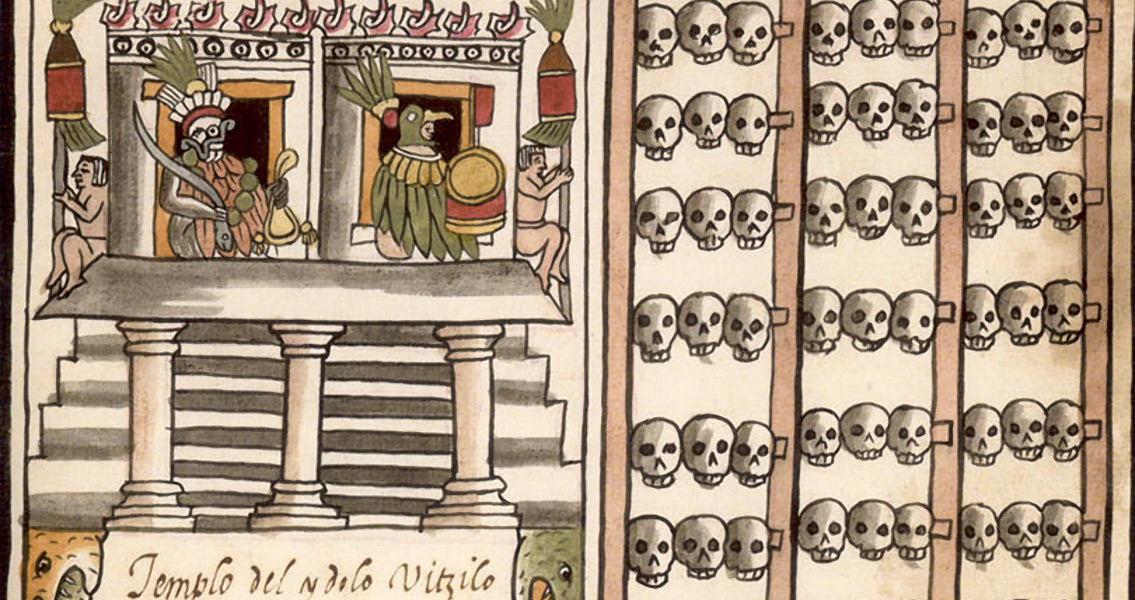<![CDATA[Archaeologists digging under a colonial-era house in Mexico City have unearthed what is probably one of the largest skull racks – a display of sacrificial victims that the Aztecs made to instill fear in friends and enemies alike – ever found. The site of the dig is the Templo Mayor Aztec, a site that has been known for a long time to have been a ceremonial place for the Aztecs, the Associated Press reports. Skull racks, or head racks, as one archaeologist speaking to the AP said they should be called, were made by pushing a wooden pole through the sides of the severed heads of sacrificial victims and then suspending these rows of heads on vertical poles. The sight of so many decomposing heads must have indeed been “a show of might” as Eduardo Matos from the National Institute of Anthropology and History told the AP. According to historical evidence, the Aztecs were in the habit of specially inviting friends and enemies to see the head racks, or tzompantli. Descriptions of tzompantli have been found in many historical documents from the early days of the colonial period in Mexico. It is also from these documents that researchers know about a major temple complex in what is now Mexico City. Yet there is a big difference between these accounts of tzompantli and the latest find, where skulls were used as a building material. So far the scientists at the dig have unearthed 35 skulls and some of these were mortared together in a rough circle, with the faces turned inwards to the empty space in the centre. It is unclear however, if there was ever anything placed in the centre of the circle. Archaeologist Susan Gillespie from the University of Florida told the Associated Press this is the first instance of skulls being used as a building material for an Aztec structure that she has ever heard of. However, there are famous sites in which human bones have been used as bricks. The Mental Floss website has made a top 10 list of structures made using human bones, in which the top spot is occupied by a tower made from human skulls. The tower, made from the skulls of Serbian rebels against the Ottoman empire, was the brainchild of one general Hurshid Pasha, who built the 15-foot tower from 952 skulls, near the city of Nis. Commenting on the Mexico City find, one of the researchers working on the dig, Raul Barrera, told the AP that there are a lot more skulls in deeper layers in the ground, so the initial number of 35 is expected to swell considerably as excavations continue. This will take time, however, because the house above the site is considered to be historically valuable, so the archaeologists often have to work in narrow wells some six feet under the floor of the house, suspended on a wooden platform, lying face down. It seems that these efforts have paid off, since there is not much doubt that this is indeed the main tzompantli of the Templo Mayor Aztec. A year ago, scientists from the National Institute of Anthropology and History uncovered another partial tzompantli in Mexico City, under a stretch of a new underground extension currently under construction. Four skulls were discovered there, Gizmodo reports, one of them, interestingly, a dog skull. Animal skulls were put on skulls racks extremely rarely, with the Aztecs obviously believing that human heads were more awe inspiring. ]]>
Large Aztec Tzompantli Unearthed in Mexico City
